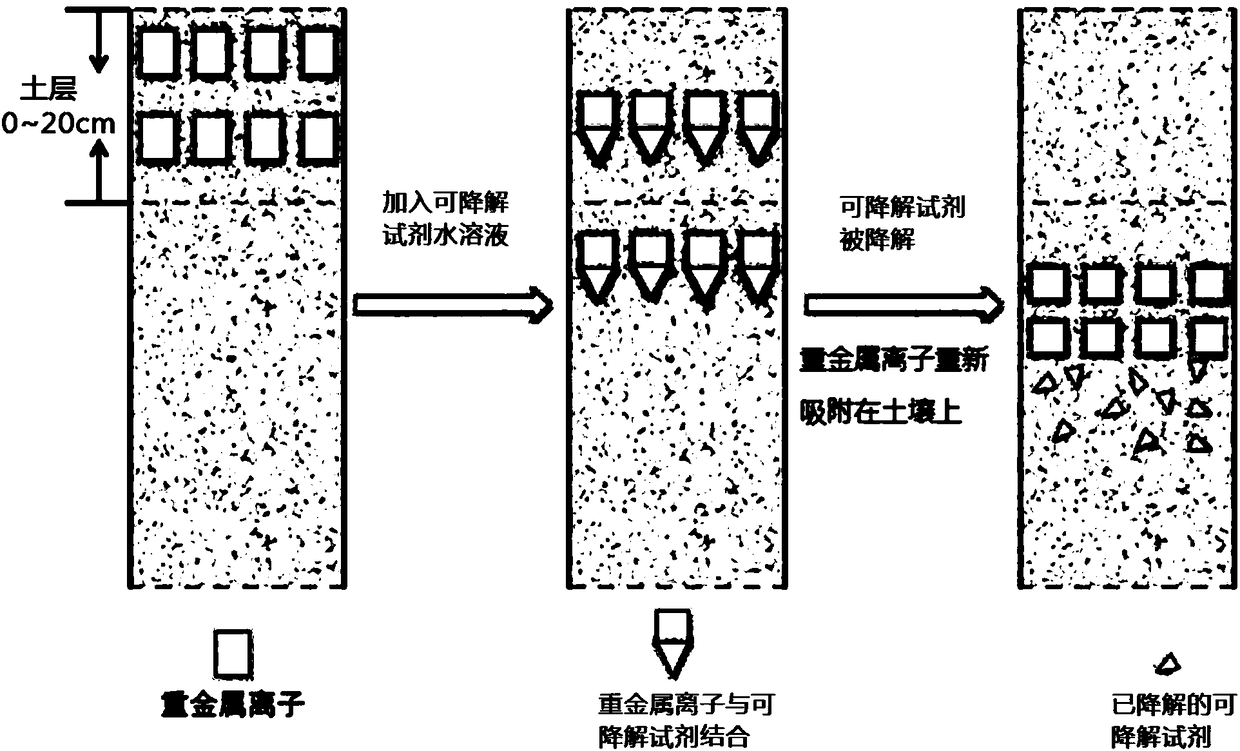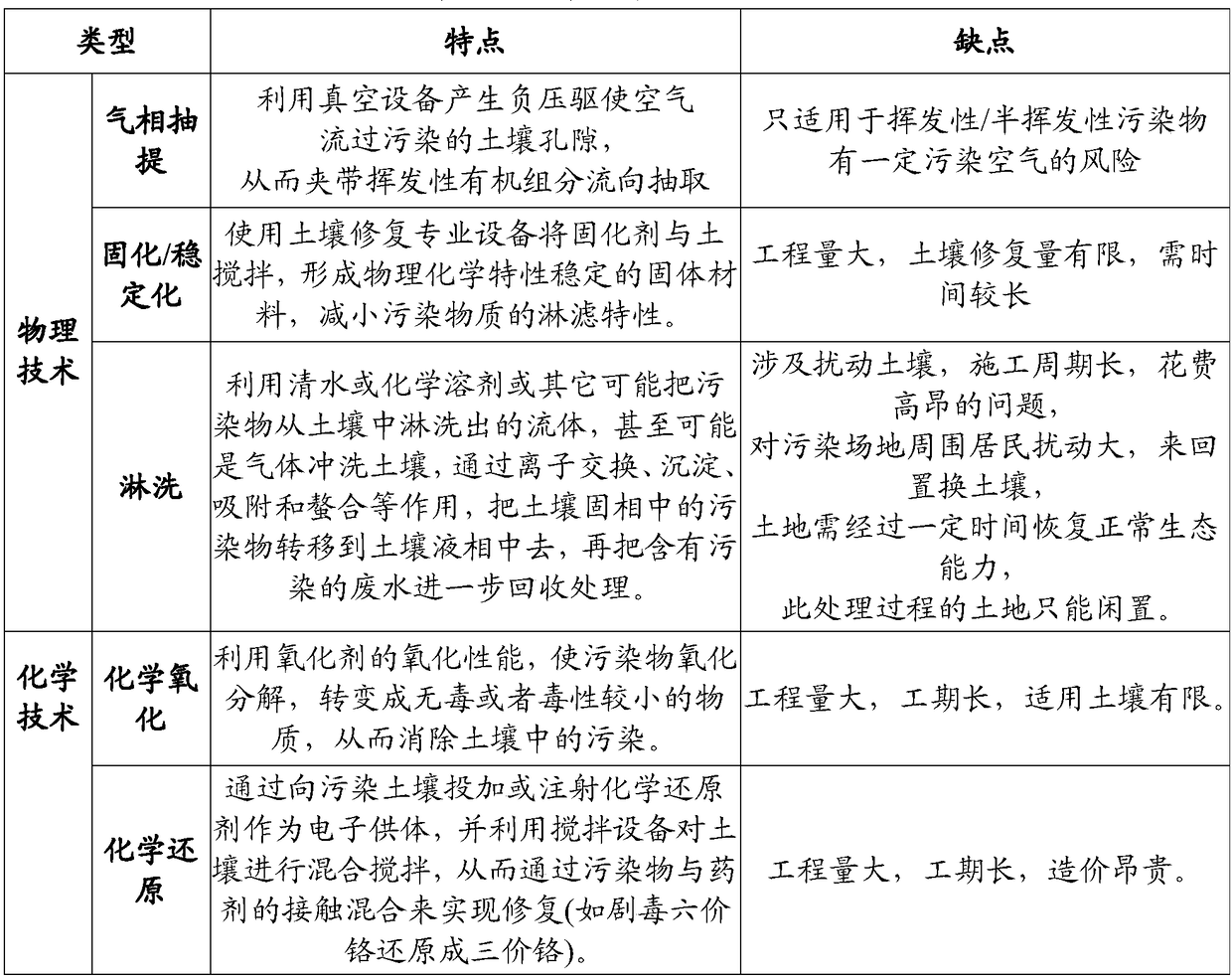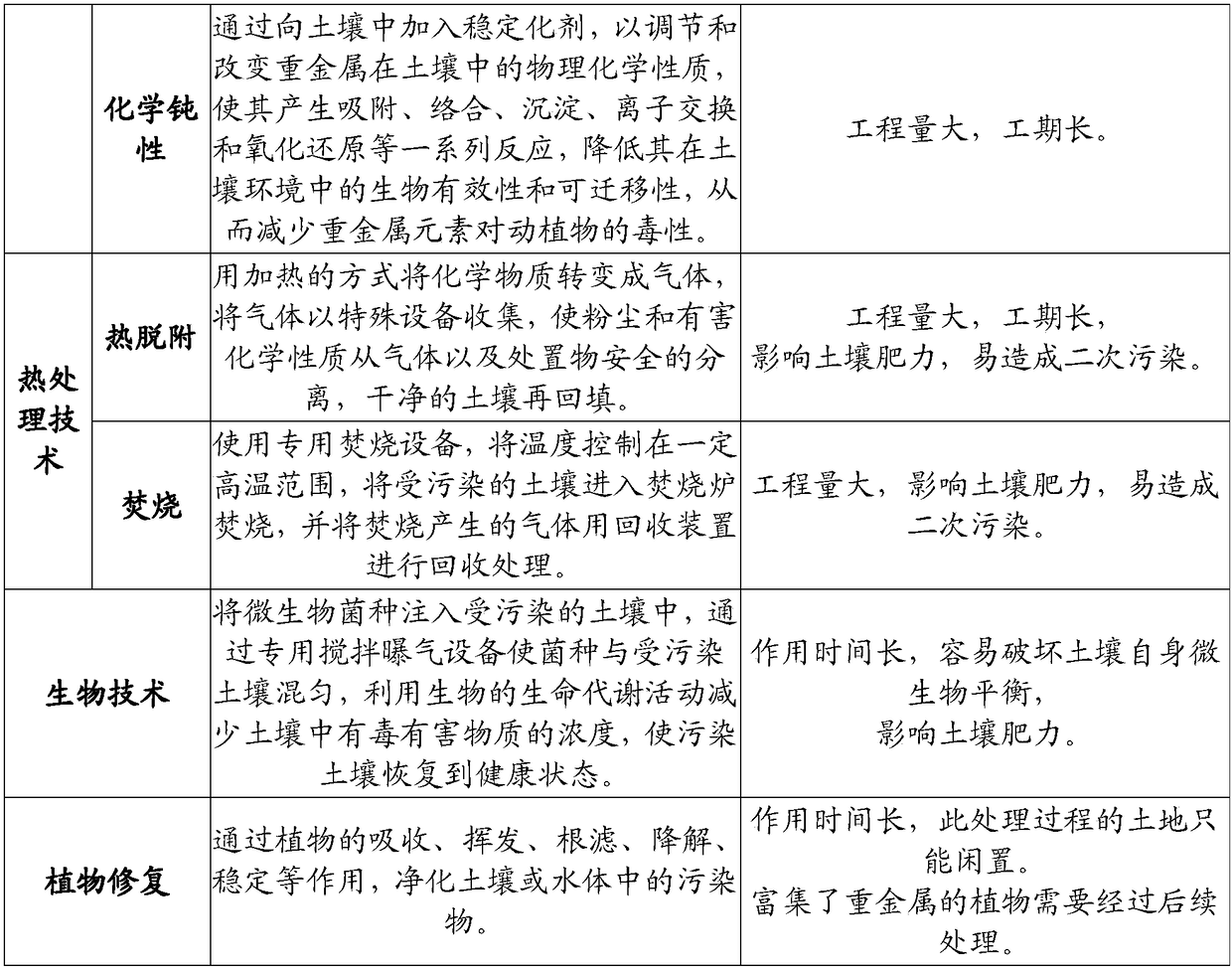A method for in-situ chromatography treatment of heavy metal contaminated soil
A technology of polluted soil and heavy metals, applied in the field of soil remediation, can solve the problems of engineering pollution, few successful cases, insufficient research and development reserves and mechanism research, and achieve the effect of reducing the enrichment concentration
- Summary
- Abstract
- Description
- Claims
- Application Information
AI Technical Summary
Problems solved by technology
Method used
Image
Examples
Embodiment 1
[0060] Soil samples were selected from polluted soil in a plot in the suburbs of Beijing, dried and ground, and passed through a 20-mesh nylon sieve. The basic physical and chemical properties of the soil are pH 7.78, organic matter content 16.1g kg -1 , cation exchange capacity 12.2cmol kg -1 , clay mass fraction 20.2wt%, silt mass fraction 34.1wt%, sand mass fraction 45.7wt%.
[0061] A 150cm deep vertical pit was dug in the actual site, and 2.5L soil samples were taken every 10cm height, and a total of 10 soil samples were taken from the soil surface to 100cm deep. A plexiglass column with a diameter of 10cm, a height of 150cm, and multiple drainage holes at the lower end is selected as the simulated soil layer device. According to the soil depth distribution of the actual site, it is filled into the glass column, and a total of two filled columns are prepared, which are marked as column 1 and column 2.
[0062] After adding about 3000ml of pure water to the column 1 to ...
Embodiment 2
[0068] Soil samples were selected from polluted soil in a plot in Shenyang, dried and ground, and passed through a 20-mesh nylon sieve. The basic physical and chemical properties of the soil are pH 7.74, organic matter content 35.5g·kg -1 , cation exchange capacity 10.9cmol·kg -1 , clay mass fraction 19.2wt%, silt mass fraction 18.8wt%, sand mass fraction 62.0wt%.
[0069] A 150cm deep vertical pit was dug in the actual site, and 2.5L soil samples were taken every 10cm height, and a total of 10 soil samples were taken from the soil surface to 100cm deep. A plexiglass column with a diameter of 10cm, a height of 150cm, and multiple drainage holes at the lower end is selected as the simulated soil layer device. According to the soil depth distribution of the actual site, it is filled into the glass column, and a total of two filled columns are prepared, which are marked as column 1 and column 2.
[0070] After adding about 3000ml of pure water to the column 1 to moisten and le...
Embodiment 3
[0076] The polluted site is selected from a plot in Zhuzhou, with a total area of 660m 2 , the site contains a natural water barrier two meters below the ground. The basic physical and chemical properties of the soil are pH 6.12, organic matter content 11.4g kg -1 , cation exchange capacity 10.4cmol kg -1 , clay mass fraction 14.4wt%, silt mass fraction 42.7wt%, sand mass fraction 42.9wt%.
[0077] Blank sampling: divide the experimental soil into four layers in depth according to 0-20cm, 20-50cm, 50-80cm and 80-100cm, and take 350g soil samples from the upper, middle and lower parts of each depth layer, and mix them evenly Determination of Cd in each layer of soil samples by ICP-MS according to the national standard for the determination of heavy metal-contaminated soil 2+ , Pb 2+ and As 5+ This value is used as the soil pollution value before treatment.
[0078] Configure 30 tons of degradable reagent aqueous solution, wherein the mass concentration of tartaric acid ...
PUM
 Login to View More
Login to View More Abstract
Description
Claims
Application Information
 Login to View More
Login to View More - R&D
- Intellectual Property
- Life Sciences
- Materials
- Tech Scout
- Unparalleled Data Quality
- Higher Quality Content
- 60% Fewer Hallucinations
Browse by: Latest US Patents, China's latest patents, Technical Efficacy Thesaurus, Application Domain, Technology Topic, Popular Technical Reports.
© 2025 PatSnap. All rights reserved.Legal|Privacy policy|Modern Slavery Act Transparency Statement|Sitemap|About US| Contact US: help@patsnap.com



